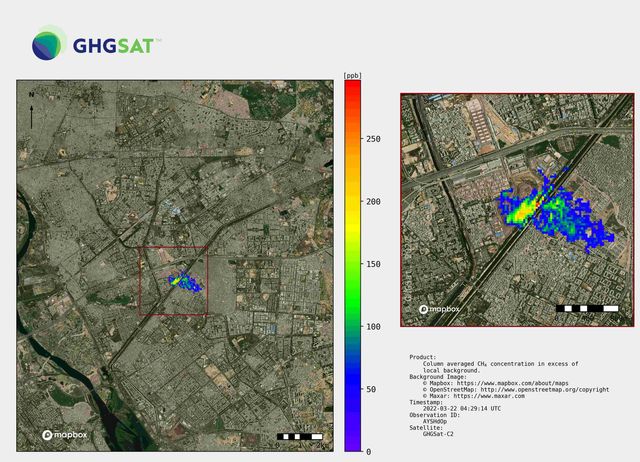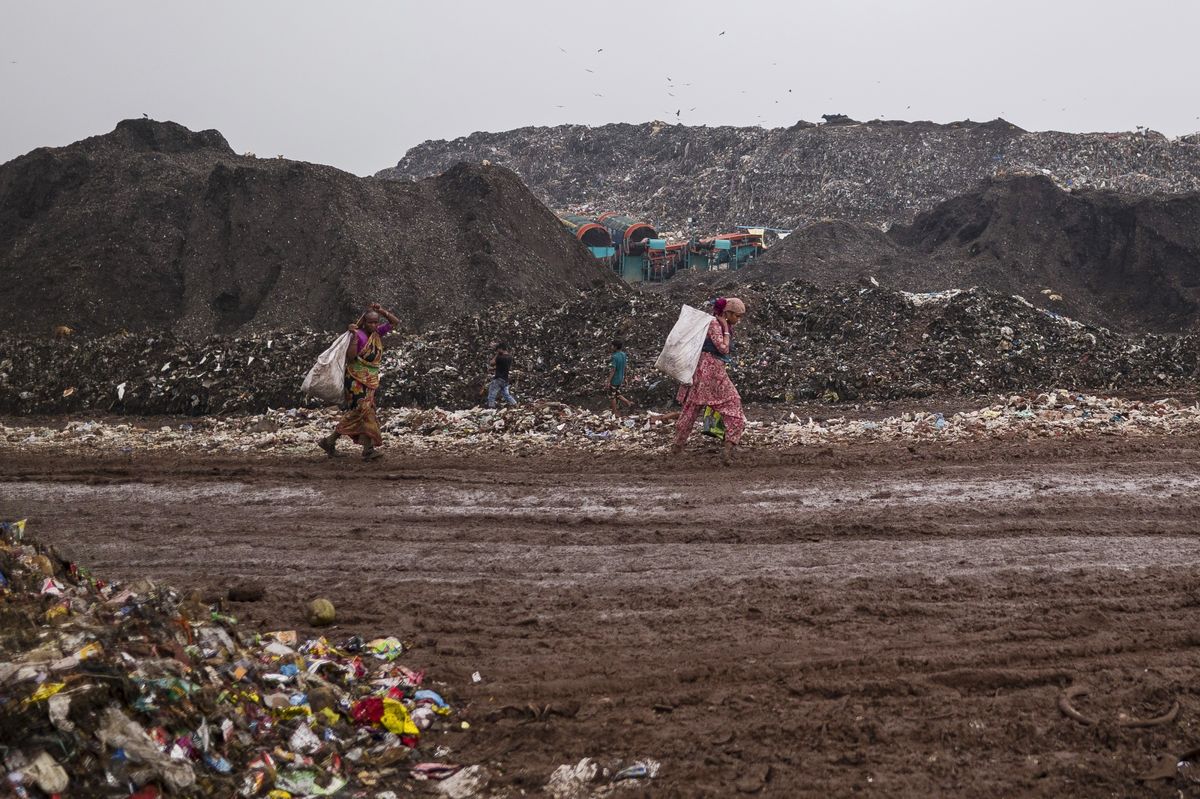
Mountains of garbage near #SouthAsia megacities are contributing to some of the world’s strongest and most persistent #methane clouds observed by satellite, highlighting a major challenge in the global climate fight. A 🧵 on my latest for @climate
bloomberg.com/features/2022-… 1/10
bloomberg.com/features/2022-… 1/10
Waste sites generate the potent greenhouse gas when organic material like food scraps or cardboard breaks down in the absence of oxygen. 2/10 

Failing to curb releases from the waste sector, which is responsible for about 20% of all methane generated from human activity, could derail global climate goals. A good overview on this issue from @RockyMtnInst here: rmi.org/insight/mitiga… 3/10
The Ghazipur dump on the outskirts of India’s capital, New Delhi, was spewing roughly 2.17 metric tons of methane an hour in March when a @ghgsat satellite passed overhead. 4/10 

If that emissions rate was sustained over a year, the leak would have the same short-term climate impact as the annual emissions from ~350,000 US cars. 5/10
Last year, more than half of all methane emissions measured globally from landfills by @ghgsat were in Asia, and India accounted for nearly a quarter of the total. 6/10 

Diverting food scraps and other organics before they enter a landfill is crucial to limiting future emissions. The impact of legacy dumps can be mitigated through aerating piles of trash and gas capture systems:
https://twitter.com/Quicktake/status/15517536712221286407/10
When my colleague @archchaudhary spoke to people who worked and live near Ghazipur many of them also pointed to the human toll from the dump: 8/10
“In our area, you will find very few people who are older than 50 years old,” said Owais, 28, a private contractor who goes by one name and lives near Ghazipur. 9/10
“There’s no government health center in our community and many people don’t realize that pollution from the dump is what is causing health problems. Those of us who understand can’t do much about it.” 10/10
• • •
Missing some Tweet in this thread? You can try to
force a refresh






